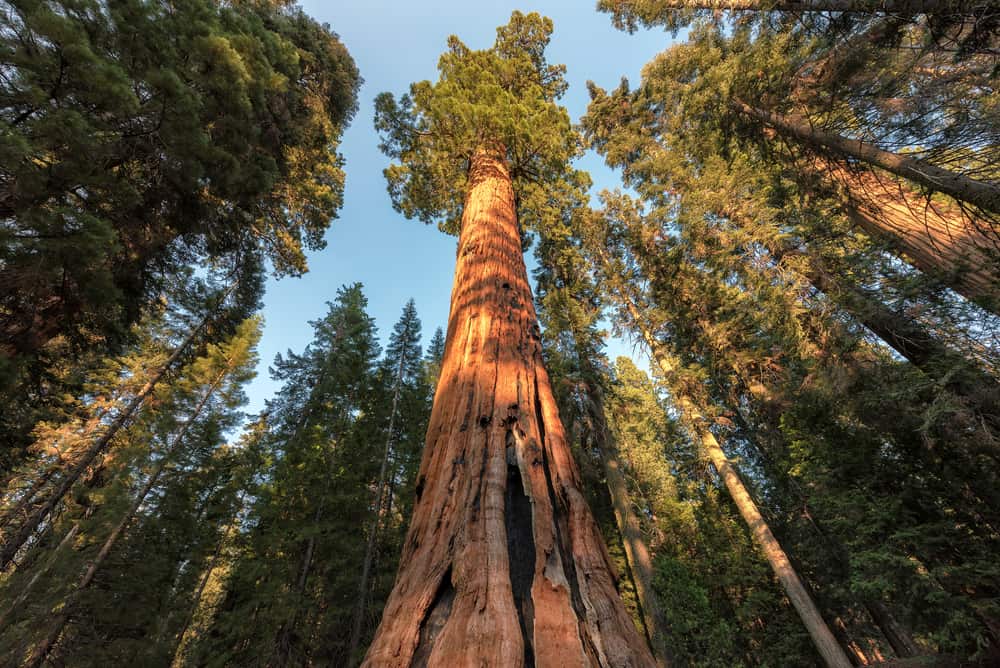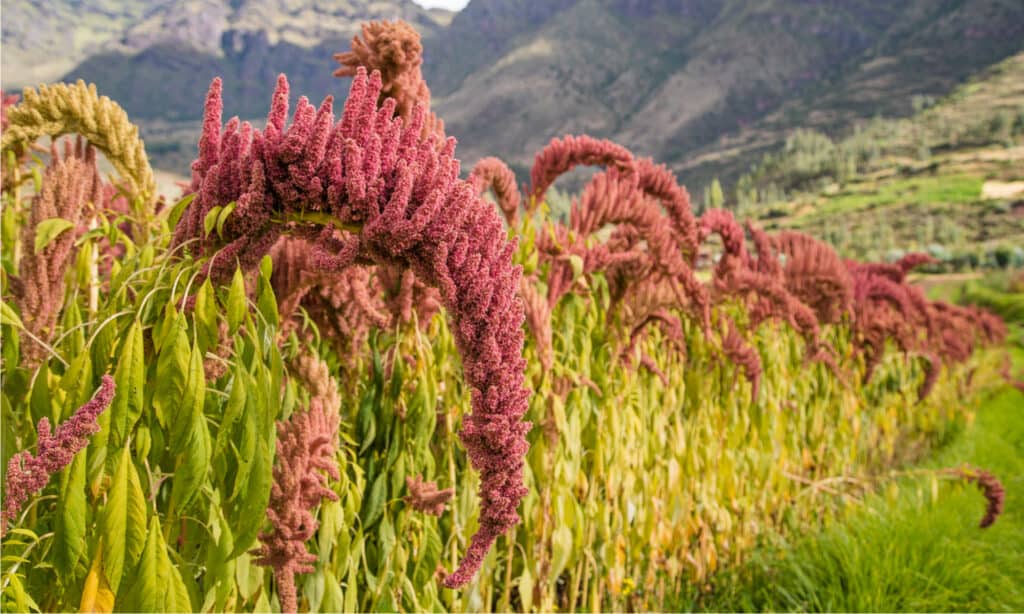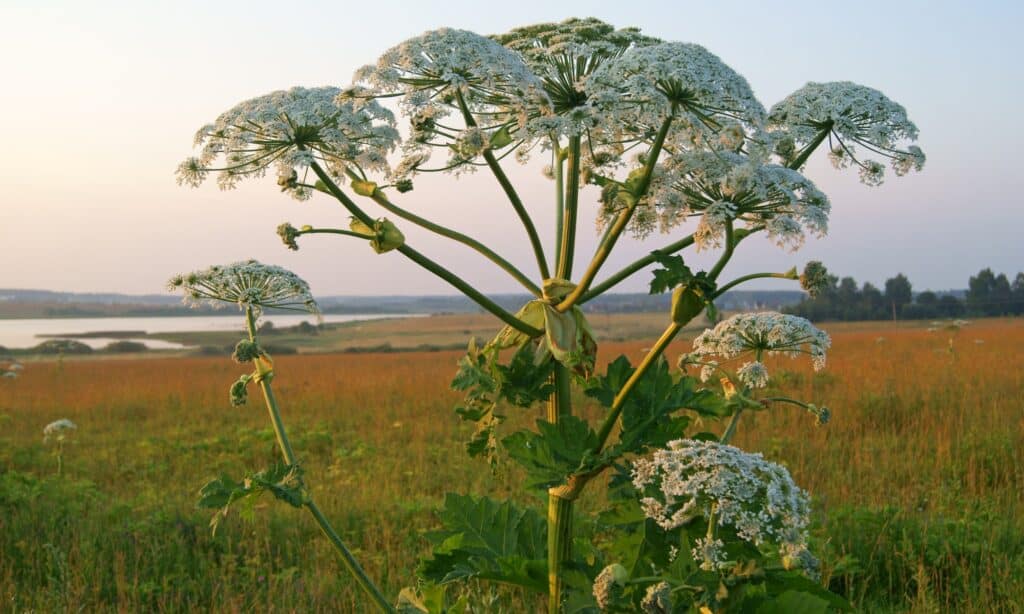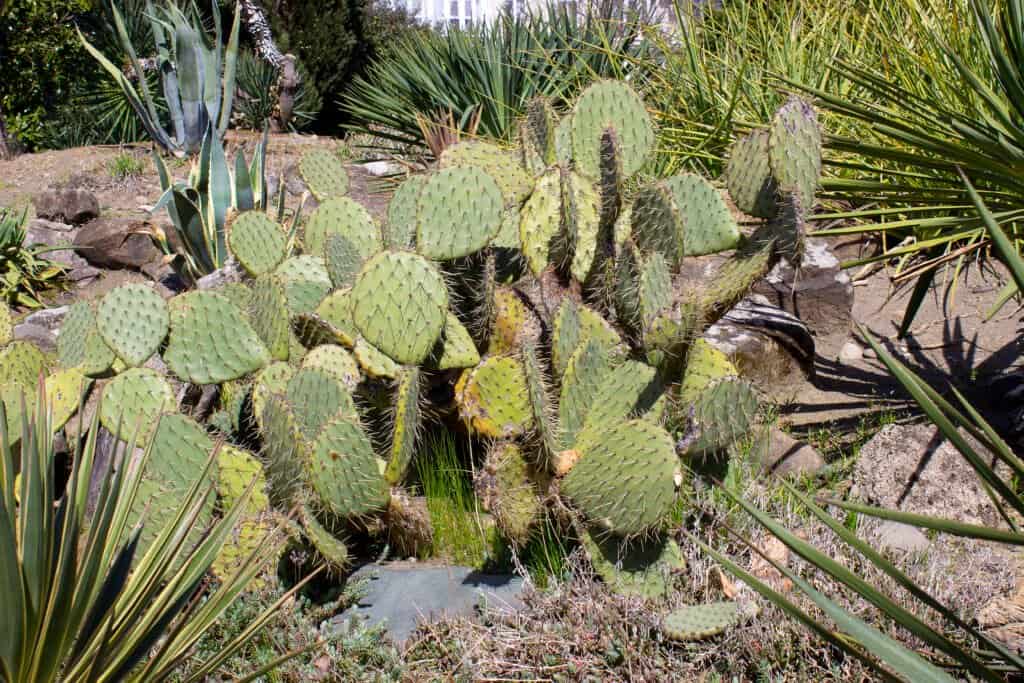Has anyone ever told you to stop and smell the roses? This common piece of advice urges us to take time to appreciate the beauty around us. The plants that cover our globe indisputably make our lives more beautiful. It’s impossible to count exactly how many plants are in the world, but by looking at the different species, we can get a general sense of the incredible variety all around us.
What is a Plant?

Plants are multicellular organisms that belong to the kingdom
Plantae.
©ablephoto/Shutterstock.com
Plants are multicellular organisms belonging to the kingdom Plantae. They are divided into nonvascular and vascular plants.
All plants have certain attributes in common. For example, all plants survive through photosynthesis. Photosynthesis occurs in two stages. First, plants take in carbon dioxide, energy from the sun, and water. Then they use them to produce glucose (sugar) and oxygen.
Plants of all kinds also contain a cell wall made of cellulose, which acts as a sort of bone structure. Plant parts exposed to the air are covered in a waxy residue called a cuticle. This protects the plant from dehydration. Lastly, all plants reproduce either by seeds or spores.
Plants can be divided into five parts, though not all plants have every one of these parts:
- Roots
- Stems
- Leaves
- Fruits
- Flowers
Plant Classifications
| Plant Phyla | Examples |
|---|---|
| Bryophyta | Juniper haircap moss, common liverwort, woolly wort |
| Pteridophyta | Whisk fern, silver fern, Mexican mosquito fern |
| Gymnospermae | Norway spruce, Douglas fir, giant sequoia |
| Angiospermae | Rose, sage, grasses |
Plants are divided into nonvascular and vascular plants. Nonvascular plants have no vascular tissues to transport nutrients and water. Being the earliest known plants on earth, they are also the simplest. They can be further classified into the phylum Bryophyta, which includes mosses, liverworts, and hornworts.
Vascular plants came along much later in Earth’s history. They contain vascular structures to transport water and nutrients. This group is divided into seed-bearing and spore-bearing plants. The spore-bearing group contains the phylum Pteridophyta (ferns). The seed-bearing plants are divided into two phyla: Gymnospermae (plants with “naked seeds”) and Angiospermae (flowering plants).
How Many Plants Are in the World?

There are approximately 320,000 plant species worldwide, ranging from giant sequoias to seagrass meadows.
©Lucky-photographer/Shutterstock.com
There are an estimated 320,000 plant species in the world. The vast majority of these are vascular plants. Although it is impossible to know the number of individual plants in the world, a recent study published by Nature Journal puts the number of trees at over 3 trillion. That’s approximately 400 trees per human!
It is possible to estimate the number of plant species by phyla. Bryophytes, for example, contain over 10,000 species of mosses and worts. Pteridophytes contain slightly more, at 12,000 species of ferns. Gymnosperms are individually numerous but are divided into a very small number of species, about 1,100. Angiosperms contain by far the highest number, with almost 300,000 different species of flowering plants.
The World’s Biggest Plant

The ribbon weed of Shark Bay, Australia, is the largest known single plant on earth. It covers an area of about 200 square kilometers.
©Philip Schubert/Shutterstock.com
When people think of the world’s biggest plant, they may picture the formidable giant sequoia, also known as Coast redwoods. These ancient trees can reach as high as 379 feet into the air, with a circumference of over 100 feet!
However, these are not the largest living plants on earth. That title goes to the Shark Bay ribbon weed, a single plant covering about 49,000 acres or 200 square kilometers. This seagrass meadow plant grows by cloning itself, a technique that has allowed it to survive adverse conditions like heatwaves. It is found in Shark Bay, an area off the coast of Australia. Astonishingly, it has been alive for over 4,500 years.
Benefits of Plant Life

Plants provide food, habitats, oxygen, medicine, and natural beauty.
©Davis Dorss/Shutterstock.com
Environmentalists have said much about the necessity of protecting our plant life. But why are our plants so important? What benefits do they provide? The question might as well be, what benefits don’t they provide? Below are just some of the ways plants ensure the survival of the human race.
Food
From vegans to meat-lovers, almost every human eats plants. They provide essential nutrients like vitamins, minerals, and fiber that are difficult to find anywhere else. Fruits can be a sweet treat, while vegetables and grains provide nutrient-rich sustenance. Much of our agriculture revolves around growing plants for human consumption.
Habitat
Plants also provide habitats for both human and nonhuman animals. From rainforests to deciduous forests to seagrass meadows to grasslands, plants offer shade, protection, and camouflage. All animals either eat some form of plant life or eat animals that do. This includes all the animals humans commonly kill for food, use for labor, or keep as pets.
Oxygen
The process of photosynthesis is a biological marvel. Plants take in carbon dioxide (a waste product exhaled by animals), sunlight, and water. In turn, they produce sugar and oxygen. Thus, they act as natural air purifiers. Without plants, animal life on earth would suffocate.
Medicine
Since prehistoric times, humans have used plants for medicinal purposes. For example, foxglove and lily of the valley contain cardiac glycosides used to treat heart conditions. The opium poppy yields morphine and codeine used to treat pain. Angelica has long been used to relieve gynecological complaints, including fertility and menstrual problems.
Beauty
It may not be an economic commodity, but studies have shown that natural beauty dramatically increases the human quality of life. Not only are people who live among abundant plant life such as trees and flowers likelier to be happier and healthier, but hordes of tourists every year flock to destinations considered to be especially lovely.
What is an Invasive Plant Species?
Unfortunately, as beneficial as plants are, sometimes they are an unwelcome addition to an ecosystem. Invasive plants are harmful, non-native species that enter a foreign ecosystem and disrupt it. Often they crowd out native plants or prove dangerous to the local animal life. This can have widespread impacts all the way up the food chain. In the worst cases, they can cause the death of entire populations of plants or animals.
Invasive species are also notoriously difficult to eradicate. Usually, they are introduced by humans who bring them in either intentionally or by accident. Some animals can bring in the spores or seeds of foreign plants. For this reason, most governments have policies in place to prevent the introduction of invasive species.
Some examples of invasive plants include:
Giant Hogweed

The giant hogweed plant is native to Asia and eastern Europe but eventually found its way to Canada.
©iStock.com/hapelena
This plant is native to Asia and eastern Europe but eventually found its way to Canada. Since then, it has taken hold in several provinces, including Ontario. Its sap can cause 3rd-degree burns when activated by sunlight.
Guinea Grass

The Guinea grass has proven to be highly invasive and damaging to local ecosystems.
©IMAGE-RUNNING/Shutterstock.com
This extremely prolific plant is native to Africa. It has since been brought to North and South America, Asia, and Europe. Farmers originally introduced it as a forage grass for livestock. However, it has proven to be highly invasive and damaging to local ecosystems.
Prickly Pear Cactus

The prickly pear cactus is one of many invasive plant species in the world.
©iStock.com/Marina Krisenko
This plant is native to North America, but it arrived in Australia in the early 1900s. It spread quickly and soon became a serious threat to farmland and crops. Experts introduced a South American moth a few years later to bring the cactus population under control. Thankfully, this attempt at pest control has been mostly successful.
Endangered Plants
Just as some plants become prolific pests, others are in danger of extinction. Approximately 40% of the plant life on Earth is at risk of extinction. Plants are commonly threatened by deforestation, overharvesting, and invasive species.
It is absolutely vital to preserve our plant life. Without it, human and animal life would cease.
Up Next
The photo featured at the top of this post is © Eric Patterson/Shutterstock.com
Thank you for reading! Have some feedback for us? Contact the AZ Animals editorial team.






